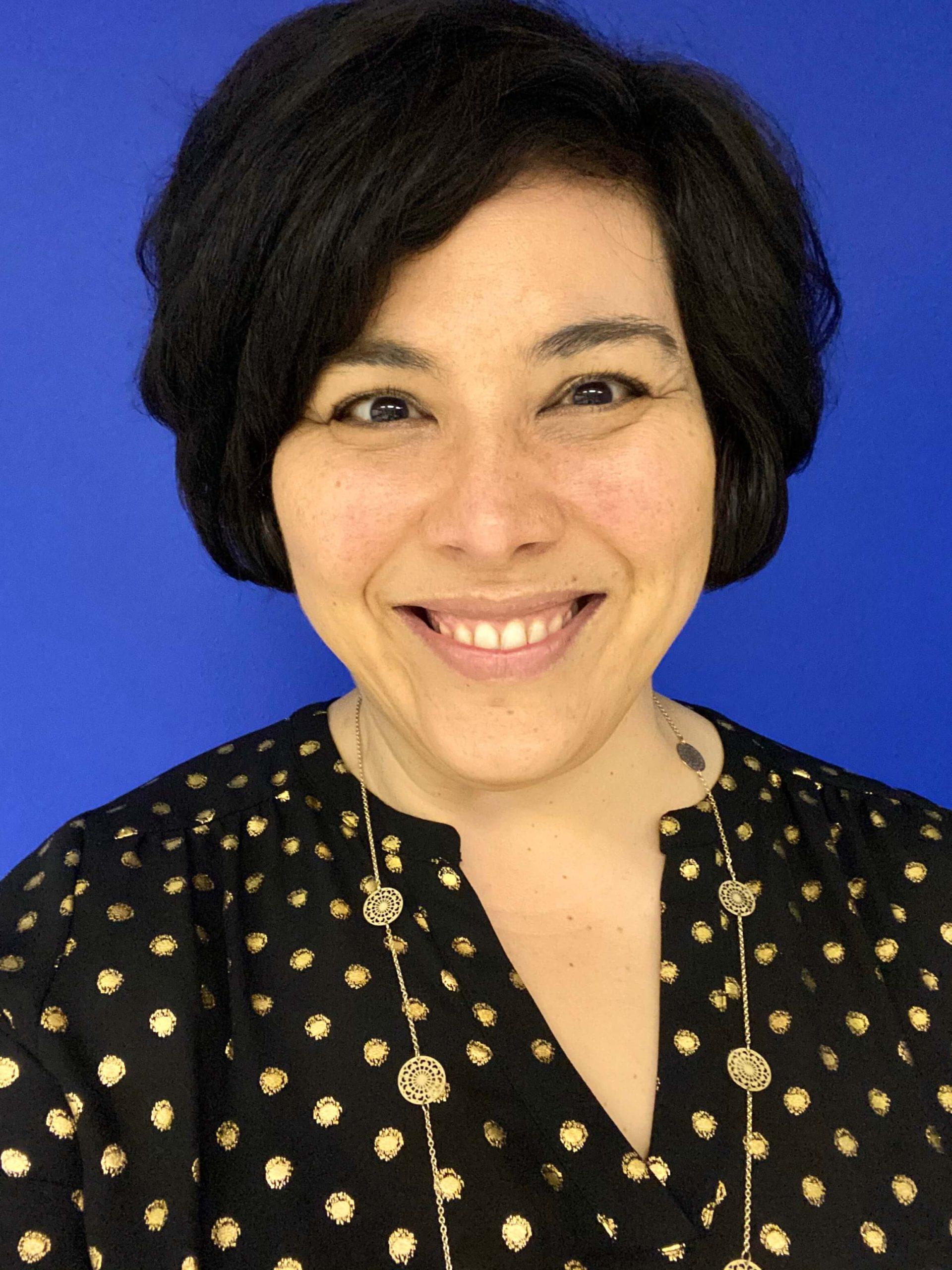FOCUS
With grow-your-own programs, new teachers find job-embedded support
By Kristin Trompeter and Stephanie Garcia-Fields
Categories: Equity, Learning designs, Learning systems/planning, Mentoring & inductionAugust 2022
Like many districts across the U.S., Miami-Dade County Public Schools is experiencing a large number of open staff positions due to higher-than-normal numbers of retirements and resignations in the face of COVID-19 coupled with enrollment declines in local universities’ education departments.
Recent data show that the district has many openings not only in the traditionally hard-to-staff areas of math, science, and exceptional student education, but even in English language arts.
The district, in partnership with New Teacher Center, has been working to address this gap through grow-your-own teacher recruitment pathways. Grow-your-own programs are pathways into the teaching profession for individuals who do not have a background in education but aspire to teach and who live or work in the neighborhoods in which a school is located.
Miami-Dade County Public Schools tailors adult learning to each grow-your-own pathway to ensure emerging teachers are nurtured and supported. #TheLearningPro Click To TweetOur grow-your-own programs provide pathways into education for prospective teachers from multiple backgrounds, including paraprofessionals, individuals employed in clerical roles, and college students who are noneducation majors but have an interest in shifting into teaching as a career.
Most recently, the district has also begun exploring how to recruit high school students who are interested in becoming educators through a renewed commitment to expand and grow its Florida Future Educators of America program as another grow-your-own pathway. Florida Future Educators of America includes a program called Project REDI (Recruiting, Empowering, and Developing Inclusive Male Teachers of Color) that focuses specifically on inspiring male high school students of color to consider a career in teaching.
The grow-your-own approach to recruiting, preparing, and supporting new teachers has many benefits for students. It can improve the demographic match between students and teachers, which research has shown to improve outcomes for students of color (Gershenson et al., 2018).
Grow-your-own programs also involve increased alignment and coordination between educator preparation programs and school districts, which can lead to teachers who are better prepared to meet students’ academic and social and emotional needs (Muñiz, 2020). Ideally, grow-your-own programs reduce teacher turnover in hard-to-staff schools by recruiting and supporting teachers who are committed, invested, and well-supported.
Tackling turnover
Creating more stability in the workforce is vital because research shows that turnover “disrupts relationships with students and other teachers, undermines professional learning, and impedes collaboration, all of which are critical to creating the supportive environments students need after nearly two years of disrupted learning” (Carver-Thomas, 2022).
The problem of turnover comes down to a lack of support for teachers. Just as students need access to supportive and nurturing learning environments that will help them thrive, so do educators. Underprepared teachers leave their schools at two to three times the rate of those who enter with comprehensive preparation (Carver-Thomas, 2022).
''Just as students need access to supportive and nurturing learning environments that will help them thrive, so do educators.'' #TheLearningPro Click To TweetConversely, when new teachers receive support from a team of leaders and experienced educators working together to help them learn and grow in a way that helps them meet their students’ needs, they are more likely to stay in the field.
For example, when Miami-Dade County Public Schools partnered with New Teacher Center on a federally funded new teacher induction program, the district saw an increase of 14% in retention of teachers in study sites — about 300 teachers or the equivalent of fully staffing three middle schools with an average enrollment of 1,400 students.
Grow-your-own programs are another way to provide the kind of new teacher support educators need and deserve to a broader group of educators.
''Grow-your-own programs are another way to provide the kind of new teacher support educators need and deserve to a broader group of educators.'' #TheLearningPro Click To TweetIncreasing teacher diversity
In addition to boosting retention rates, one of the major benefits of the grow-your-own approach is that it has helped the district increase the number of teachers of color. Students of color make up the majority of students in the district, and studies have shown that learning from teachers of color can have a powerful impact on student achievement. For example, Black students who have at least two Black teachers by 3rd grade are over 30% more likely to attend college, and students of color who have teachers of the same race or ethnicity show higher academic achievement, attendance, enrollment in advanced coursework, and high school graduation rates (Gershenson et al., 2018).
To date, the Paraprofessional to Teach pathway is supporting 189 participants. Of those, 88% are individuals of color: 57% are Black, with 9% Black males and 48% Black females; 31% are Hispanic, with 4% Hispanic males and 27% Hispanic females.
In the Clerical to Teach program, 89% of participants are individuals of color: 39% are Black with 2% Black males and 37% Black females; 50% are Hispanic with 6% Hispanic males and 44% Hispanic females.
In the Temporary Instructor Preparation and Support program, in which college students work as temporary teachers while exploring a career in education, 98% are individuals of color: 52% are Black, with 40% Black females and 12% Black males; 45% are Hispanic with 29% Hispanic females and 16% Hispanic males; 1% are Asian females.
Project REDI, within the high school pathway, specifically focuses on encouraging and supporting young men of color to become educators. A new program, it will ultimately support these young men from high school into their first three years of teaching and then into leadership roles in schools or elsewhere in the district.
Additional pathways that are being considered because of the desire to increase potential hires of men of color are school security personnel, 42% of whom are male, and custodial staff, 58% of whom are male.
Sustained support for new teachers
Filling vacancies is just the beginning of the grow-your-own pathways. The deeper work comes from how districts support and nurture these new teachers once they have been recruited.
Miami-Dade County Public Schools intentionally identifies and leverages the unique strengths each educator brings based on their backgrounds, experiences in their current roles, and membership in the shared community of the school.
In partnership with New Teacher Center, we have worked to design meaningful and personalized adult learning experiences based on these strengths and tailored to each grow-your-own pathway. This has helped ensure that these emerging teachers feel nurtured and supported from the beginning and their practice can be accelerated so that they can effectively meet the diverse needs of the students they serve.
Nurturing teachers means working to ensure that they have the optimal working environments they need to thrive and stay in the profession and also be able to successfully create optimal learning environments for their students. The learning experiences and support we provide are grounded in New Teacher Center’s optimal learning environment framework. This work focuses on cultivating learner-centered environments that are emotionally, physically, and intellectually safe; implementing equitable, culturally responsive, and standards-aligned curriculum and instruction; and effectively meeting the diverse needs of every learner.
''Nurturing teachers means working to ensure that they have the optimal working environments they need to thrive and stay in the profession.'' #TheLearningPro Click To TweetOne of our approaches to support that is grounded in this framework is an instructionally focused teacher mentoring program, through which grow-your-own teacher candidates receive targeted and strategic support from an experienced teacher. These relationships can provide opportunities for thought partnership, modeling of best instructional strategies, and even co-teaching opportunities to develop their teaching craft before they become a teacher of record.
To ensure that mentors are well-prepared to support their teaching partners, we work with the veteran teachers on how to collaborate and differentiate their supports based on the candidates’ backgrounds and experiences. These teachers attend a professional learning course that enables them to understand not only the needs of adult learners, but specifically the needs of individuals coming into the profession with varying levels and types of experiences in education.
For example, paraprofessionals are in classrooms working with students every day. They have seen and often supported instruction before. Mentor teachers can build on this strength by helping their mentees identify pedagogical strategies with which they are already familiar and assisting their mentees in taking ownership of them.
These veteran teachers are also immersed in professional learning focused on centering students in the conversations they have with paraprofessional mentees. This helps ensure that the paraprofessional teacher candidates will have the preparation they need to create emotional and intellectual safety in their future classrooms, with an emphasis on the importance of listening to students about what they need to thrive.
Those in clerical positions at a school site are vital liaisons between the school, caregivers, and the community at large. They already have so much knowledge of students from day-to-day interactions, including historical information, home dynamics, and even academic and social-emotional strengths and needs. Veteran teachers can help their mentees see how this knowledge can be built on to implement classroom procedures and routines that create optimal learning environments.
College students participating in grow-your-own programs are working in positions as temporary instructors while they explore a career in teaching through the district’s Temporary Instructor Preparation and Support program. Professional learning for veteran teachers in this program integrates much of the same knowledge as the other programs plus an added layer of how to provide mentees with embedded classroom support.
This job-embedded support helps the mentees immediately apply new knowledge and skills in the classroom to both accelerate the mentee’s growth and enhance student learning growth. It also allows the veteran teachers to address real-time classroom concerns in a way that impacts mentees’ understanding of what it means to serve as the teacher of record for any student in their classroom and how to meet the diverse needs of each of their learners.
The veteran teachers are not only developing the next generation of teachers, but also developing their own skills, professional growth, and leadership. They have opportunities to engage in self-identity work and then encourage their teacher candidate to engage in this same type of reflection. This helps cultivate leadership and provides a space for educators to engage in equity-centered, anti-bias work in the service of creating optimal learning environments and equitable learning spaces for all educators, mentees, and students.
Fulfilling the promise with grow-your-own pathways
Since the need for more teachers will continue to pose a significant challenge to schools, especially those serving marginalized students, finding innovative ways to recruit and support teachers is vital. U.S. schools were short at least 100,000 teachers even before the pandemic drove many educators out of the profession (Carver-Thomas, 2022).
Students cannot wait for these vacancies to be filled. They need someone supporting them who understands how to leverage their strengths and meet their needs during every year of their education. That means districts must identify, train, and continuously support new educators to provide the highest-quality education.
These new teachers must be seen and nurtured for who they are. We must leverage their strengths and address their needs. The same principles that apply to honoring students’ identities and needs apply to new and prospective teachers. Through grow-your-own programs, districts can tailor supports to new teachers’ backgrounds and experiences to cultivate a strong and stable teacher workforce.
Our multiple grow-your-own pathways are a key strategy through which the district will continue to nurture the humanity of all teachers, especially those entering the profession, so they can fulfill their promise and students can fulfill theirs.
Download pdf here.
References
Carver-Thomas, D. (2022, February 9). Teacher shortages take center stage. Learning Policy Institute. learningpolicyinstitute.org/blog/teacher-shortages-take-center-stage
Gershenson, S., Hart, C.M., Hyman, J., Lindsay, C., & Papageorge, N. (2018). The long-run impacts of same-race teachers. National Bureau of Economic Research. doi.org/10.3386/w25254
Muñiz, J. (2020). Investing in grow your own teacher programs: Leveraging state-level competitive grants to promote quality. New America. www.newamerica.org/education-policy/reports/investing-grow-your-own-teacher-programs/
Kristin Trompeter (ktrompeter@dadeschools.net) is instructional supervisor in the Office of Professional Development and Evaluation at Miami-Dade County Public Schools.

Stephanie Garcia Fields (sfields@newteachercenter.org) is a senior program consultant at New Teacher Center.
Categories: Equity, Learning designs, Learning systems/planning, Mentoring & induction
Recent Issues
TAKING THE NEXT STEP
December 2023
Professional learning can open up new roles and challenges and help...
REACHING ALL LEARNERS
October 2023
Both special education and general education teachers need support to help...
THE TIME DILEMMA
August 2023
Prioritizing professional learning time is an investment in educators and...
ACCELERATING LEARNING
June 2023
Acceleration aims to ensure all students overcome learning gaps to do...











